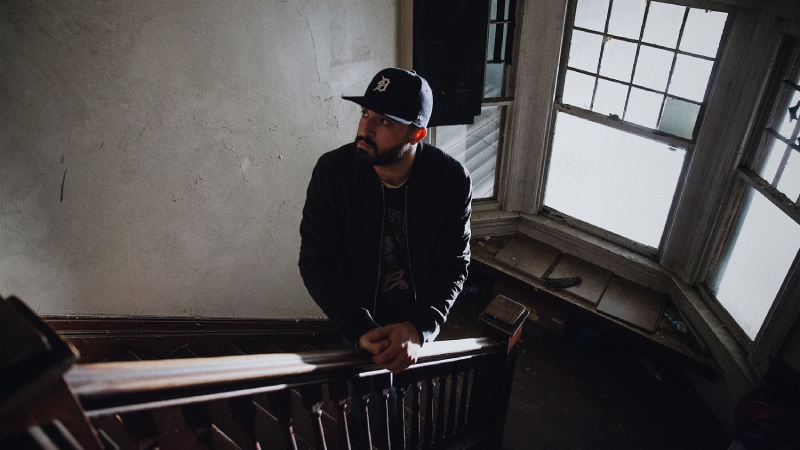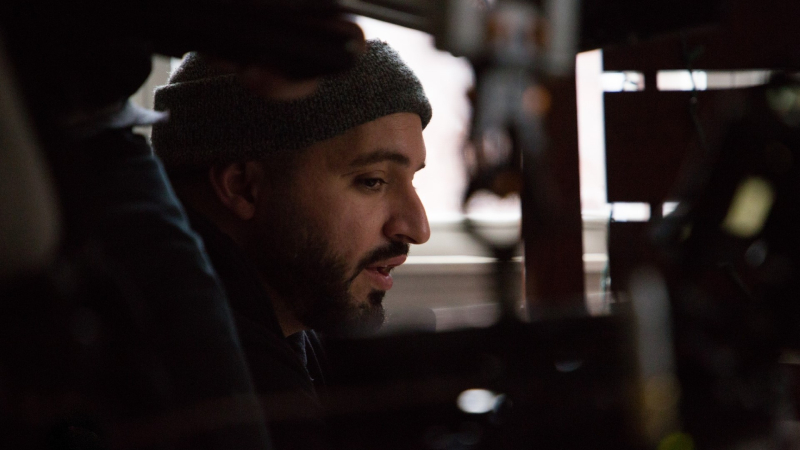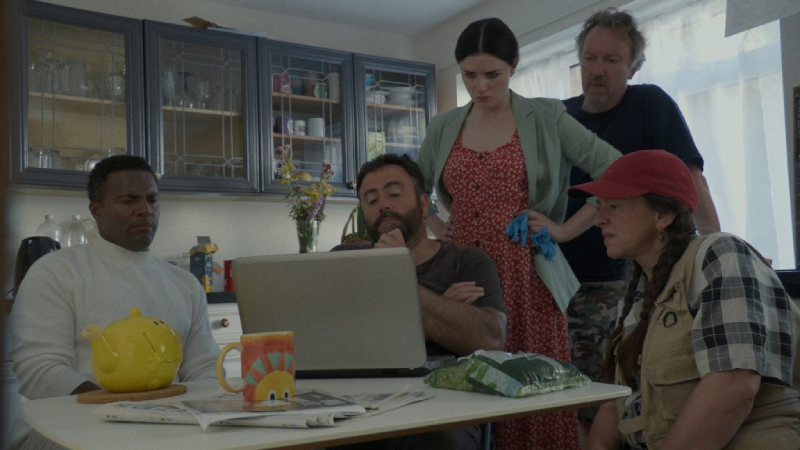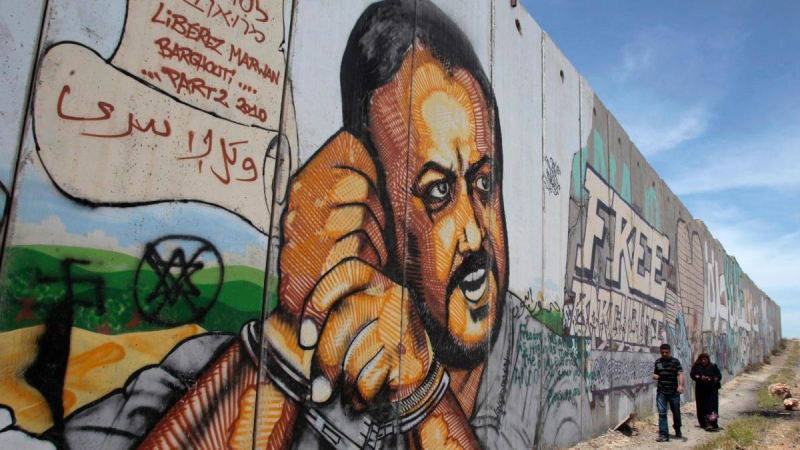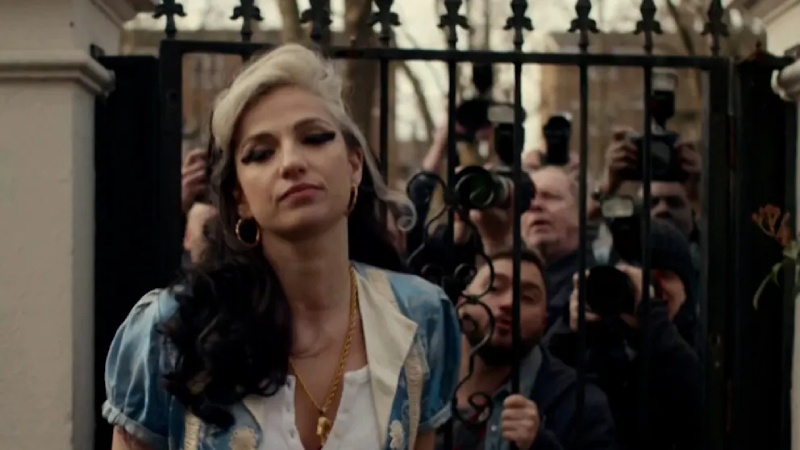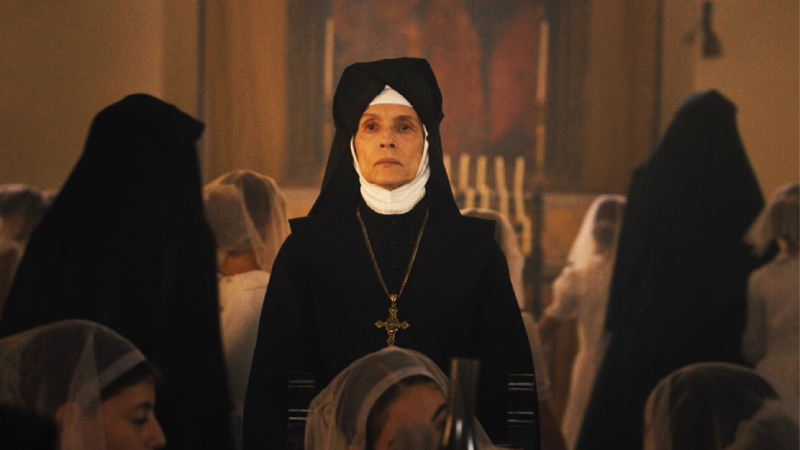Shaun Dozier is the filmmaker behind The Problem with the Hero (2023), which showed at the San Francisco IndieFest, the Harlem and at the Naples International Film Festival, amongst other events. Shaun is a New York-based North Carolina native, and a graduate at Atlanta’s SCAD MEA film programme. He has directed films in Peru, Brazil and Mexico.
Dozier’s sophomore feature is the story of two writers. The first, Paul Green (David zum Brunnen), is a Pulitzer Prize winner who enjoys many of the privileges of a white man. The other one is Richard Wright (J. Mardrice Henderson), a black artist desperately trying to get his voice heard in the United States of the 1940s. The pair are developing a stage treatment of Wright’s Native Son, but their backgrounds and contrasting philosophies quickly come to the forefront as they try to piece together a particularly delicate scene. What starts off as a friendly discussion about narrative outcomes quickly spirals into a discussion about what the US is to them.
…
.
Eoghan. Lyng – What was it that drew you to these two central characters? These are two intelligent men with conflicting view points who simultaneously hold immense respect for one another. In today’s polarized climate it was refreshing to portray a civil but passionate debate where both parties were still able to listen to each another.
Shaun Dozier – Green was a former soldier who believed that democracy, steered by the voices of citizens such as himself, would gradually generate the change he wished to see. Wright was a communist at the time, who saw only the entrenched interests of power and wealth gripping the nation until a revolution of the marginalised forced them to let go. For this he saw little hope. These are the viewpoints with which they began their work of turning Wright’s novel into a Broadway play.
Their initial collaboration took place over a few weeks in the summer in Chapel Hill. This was Green’s territory where he was at the height of his command, a venerable White Pulitzer Prize winning professor. Wright comes in as young Black novelist with a smash hit and a sensationally unlikable protagonist. Though the character’s unredeemable nature was the main point of Wright’s book, Green was able to convince Wright to temper his portrayal in the draft of their play which accompanied Wright back to New York.
By March, Wright had steered the play back to his original vision. Our film takes place when Green arrives to witness the ongoing rehearsals. As Green debates the changes, Wright is forced to stand up to the man that has become more than just his collaborator, but a kind of mentor and possibly friend. In Wright’s rebuttals, Green is forced to question his place in the telling and advocacy of African American stories.
EL – The film is set in the 1940s – do you think race relations have progressed to a satisfactory level in the last eighty years?
SD – There has certainly been progress, but we still have a long way to go. I can say I know as much and as little to know I am hardly the one to speak with any authority on race relations.
In terms of our story, I imagine Wright would be satisfied to see the dissolution of the tenements he so railed against, but he might be disappointed that low-income housing projects are still necessary and disproportionally house people of color. He would further be dissatisfied with the makeup of our prisons and the histories of those that live there, of those that were killed before they could even go to trial.
And clearly the fact that our story is still relevant today, yields something to our continually evolving consciousness about race as a nation. We are very much deeply involved in discussions of race. Which stories should be told? Whose perspective? Who has a right to tell that story? Who has the right to revision? Which and whose stories have worth?
EL – Richard Wright says “Let them be offended”: Is that a philosophy artists should apply to their work?
SD – Always. Art is meant to be a reflection of the human experience. Reflections can sometimes give offence. They can also inspire.
Native Son is ugly and mean, offensive. But it inspired countless adaptations and characters similar to Bigger. Possibly more importantly it inspired heated debate which is why we are still talking about it today.
EL – Orson Welles is depicted as roguish, albeit ruthless; a man determined to achieve his vision no matter the cost. Would actors tolerate Welles’s behavior today, like they did in 1941?
SD – I would hope that Orson Welles would have been sensitive enough if he were living today to adapt the most offensive of his behaviors. Perhaps he would have found better ways to inspire his cast and crews.
EL – Do you think the Native Son play might speak differently to audiences experiencing the work for the first time in this post Black Lives Matter milieu?
Native Son has been continuously performed and adapted since it first premiered. Brandon Haynes who played Bigger Thomas in our production had recently wrapped Nambi E. Kelley’s adaptation at Playmakers Repertory Company in Chapel Hill. American Fiction (Cord Jefferson, 2023), which was nominated for Best Bicture this year (and won Best Adapted Screenplay), highlights the story of a novelist who is offended by the overuse (and success) of Bigger Thomas-like characters. I believe the conversation has developed over the past 80 years, but it is still immediate and relevant.
EL – How did you come across David Zum Brunnen, and how did you know he was the right person for Paul Green?
SD – David, as the producer and actor of the previous staged version called Native, actually approached me to direct the film after speaking with our cinematographer Steve Milligan. I was fortunate to benefit from the extensive knowledge and understanding brought to our production by David and the Native team.
EL – J. Mardrice Henderson has some of the more insightful lines in the film; did he research the part rigorously?
SD – Josh (J. Mardrice) had also played Wright in the staged version and as such came to our project already thoroughly researched. As the staged version takes place entirely in one hotel room, however, we did discuss further in rehearsals the month before production, revisiting sections from Wright’s autobiography Black Boy, amongst many other sources.
EL – Would you class the film as “historical fiction”, and are there other examples of the genre that inspired your work?
SD – We tried to steer as closely as possible to the truth as we understood it while still producing a dramatically engaging film. Much was added to the film script for the sake of historical accuracy. That said, as in any biographical work, there are certainly elements of fiction.
In an attempt to break out the story from the confines of a single hotel room, I studied Danny Boyles’ Steve Jobs which takes place backstage in real time during the lead up to a stage “performance”. For inspiration on filming cinematic conversations we looked at the likes of Hunger and Frost/Nixon, amongst others.
While never leaving the theater, we knew we needed to transition between past and present as well as attempt to express the arguments of Wright and Green in a more visual way. For this we looked at Dogville, Lonestar, and the French Canadian film Lilies. We use the language of theatre, conjuring the spaces of Green’s Chapel Hill office, Bigger’s jail cell, Wright’s train, and the hotel lobby, all on the stage, transitioning from one space to another as seamlessly as possible, between cuts, or drifting between pools of light.
EL – “Enough people say the same nonsense, that it might as well be the truth,” is another killer line. Is that a commentary on the media, and the reader’s susceptibility to it?
SD – Absolutely, particularly in our age of social media where untruths and misleading opinions are so quickly disseminated and taken as fact. I am also an educator and, as we are exposed to an increasing amount of information online and in the media, I find increasingly the need to teach the skills necessary for fact checking, questioning, and evaluating sources of information.
EL – What is the central message of the film, and do you think there is a lesson that the viewers can learn from the story?
SD – Who has the right to tell a story and what are the obligations in the telling? Also the core of Wright and Green’s disagreement were conflicting fundamental beliefs and assumptions about America and the best way to incite change. My hope is that viewers would recognise the questions asked by these men are still questions we are grappling with today. Given the variety of responses we’ve had, I think it is evident there is no clear answer. It is a conversation.
…
.
Shaun is pictured at the top of this interview.









